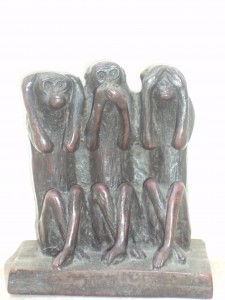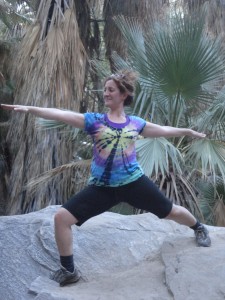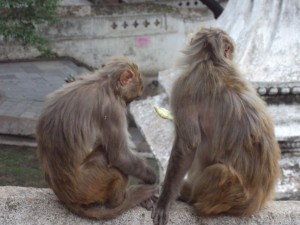We talk a lot about taking our yoga off the mat, as if off-the-mat is any different than on-the-mat.
As a teacher, it is very instructive to witness the various machinations of the mind while bodies are moving in space on the mat. The curious element, for me, is how during a practice of mindful movement, we can so easily turn off to the bigger picture of mindfulness which requires union of mind and body; in other words, Yoga!
Some people come to Yoga for the physical wellbeing it promises and others for spiritual awakening using the body as the doorway to that light. Both are happening at any given time for all who take this yogic leap of faith, by the simple act of unrolling their mats.
What happens, sometimes, is that we separate the experiences of life on and off the mat; we expect a certain intentional atmosphere including calm, lilting music, perhaps some soothing aroma or the dulcet tones of an already enlightened teacher who will compassionately guide us to our own version of Nirvana. If that is the quest, and it is a lovely one, a spa retreat might be the thing you seek (though finding an already enlightened teacher may be a different path on this journey). I suggest that Yoga practice requires a broader definition of what peace means, which may include a hurdle of discomfort essential to finding that peace.
For a practitioner of Yoga, the challenges include facing yourself, wherever you are, and dealing with whatever circumstances arise. If you are in your car, driving sanely and mindfully, and the person behind you is riding your tail in an aggressive way, what do you do? Some might move into harsh language (I’ve been there) or might slow down just to annoy them further; others might pull over to let the car pass or take a deep breath or ten and keep going. Actually, I’ve experienced each one of these scenarios and find the ones that create change in me a better service than trying to change the driving habits of the other person. I’m always telling my kids, when they are confronted with seemingly annoying behaviors, that the only person they can change is themselves.
Now, you’re on the mat and the music is not what you expected and is beginning to irritate you or the person next to you smells or makes sounds that distract you from your otherwise peaceful practice. Is it the teacher’s job to create a level playing field for all to mindlessly and calmly move through their practice? I don’t think so. When I was studying meditation at the Shambhala Center in NYC, there were jack-hammers going all day long! What could we do? We practiced!
It is my deep feeling that some of the most potent and lasting lessons come from meeting discomfort or agitation head-on. Pema Chödrön, the esteemed American Buddhist Nun of the Shambhala lineage, teaches to “lean into the sharp points” and to “meditate on whatever provokes resentment.”
Meditation is the key that has the potential to open these locks which prevent us entry to that peaceful feeling we seek. These locks insulate us from listening to the instruction to notice what arises and truly hear it; they give us permission to maintain the status quo of our habitual reactions; they are roadblocks to moving further on the path. Adding a regular meditation practice to your asana practice may loosen those locks and allow entry to a more malleable experience in the world.
If Yoga means, “Union,” why would we expect special treatment on the mat? When we truly meet ourselves where we are, sometimes what we meet does not fit the perfect picture of how we wish to see ourselves. That’s when the work begins.
** Monkey Mind is a reference to the nature of our minds, which we see more clearly as we sit in meditation. Thoughts are viewed as branches and the Mind as a Monkey. The monkey swings from branch to branch much the same way the mind flows from thought to thought. Through meditation we don’t try to eradicate thought, rather still the mind enough to recognize the nature of thinking and not to get stuck on storylines or outcomes. We simply recognize a thought, label it “thinking” (without judgment) and return to the breath.




